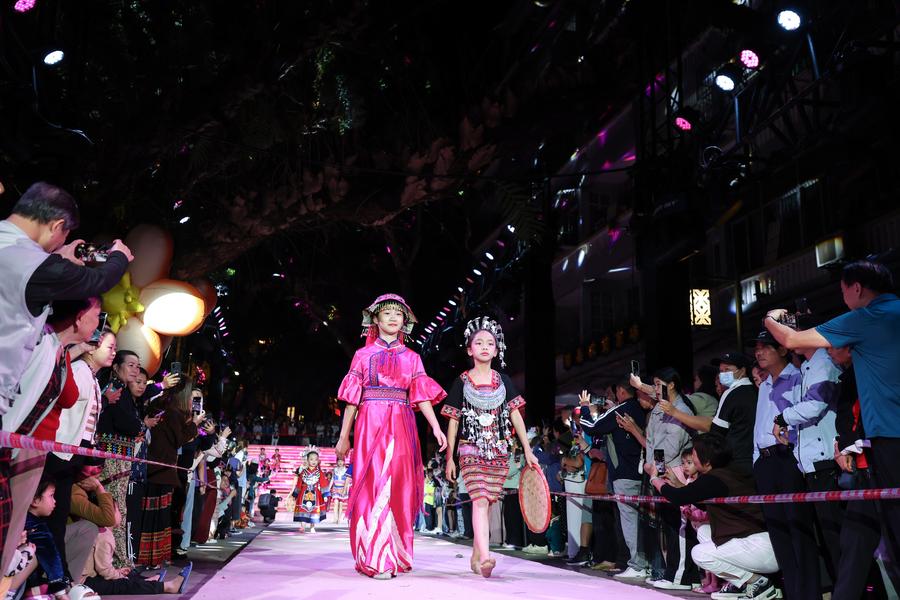
In Wuzhishan, in the Chinese province of Hainan (South), the large market is transformed into an outdoor parade to celebrate the traditional Sanyuesan festival, which fell on the third day of the third lunar month.
A carpet of fabric covers the aisle, arranged staircases serve as a podium, and the camphors form a natural curtain. This immersive event has honored the textile heritage of Li and Miao ethnic groups.
Inspired by the themes of harvest, weaving and children’s games, the “Village Show” brought together models from local communities. Dressed in traditional Li and Miao clothes, they paraded by wearing agricultural tools, such as sickles and sieve, recalling the close link between these clothes and daily life.
Among the spectators, Bonino Gabriella, Italian sinologist, salutes the beauty and the comfort of these outfits, highlighting their motifs inspired by nature and everyday life, such as frogs, birds and agricultural scenes.
Recognized as “living fossil” of the textile industry, Li Jin has a history of more than 3,000 years. In December 2024, UNESCO scored it on the representative list of the intangible cultural heritage of humanity, thus strengthening its international recognition.
On March 11, 2025, this ancestral heritage made a remarkable entry into Paris Fashion Week. Belgian stylist Véronique Leroy joined Li Jin in an autumn-winter 2025/26 collection, mixing traditional patterns and modern cuts.
Invited to the event, Liu Weitong, a young weaver of Wuzhishan, made a live demonstration. Coming from a family of craftsmen, she discovered weaving from the age of eight and today aspires to modernize this heritage while preserving its authenticity.
The Wuzhishan weavers breathe new momentum into Li Jin by declining it in the form of contemporary accessories: telephone shells, handbags, table runners … These creations are found in tourist markets, trendy shops and international forums, such as the Boao forum for Asia.
During the opening ceremony of the Sanyuesan festival, a holographic projection staged real models and virtual avatars, creating a spectacle sublimating the beauty of Li Jin through a play of light and movement.
Another highlight of the festival: an exclusive collaboration between local craftsmen and an international brand of Fast Fashion, leading to a collection that has attracted visitors.
For Zhang Qionghua, director of the Wuzhishan Tourism and Culture Office, these initiatives show that tradition and modernity can coexist. Today, Li Jin asserts himself not only as a treasure of Chinese heritage, but also as a symbol of cultural innovation on the world scene.






